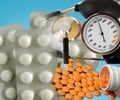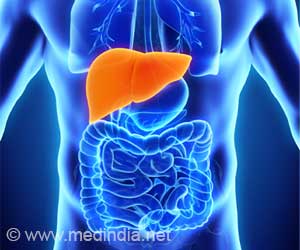A 45-minute scan from an ultrasound machine can now be accomplished by simply holding your phone up to the neck for a minute or two.
Highlights
- Left ventricular ejection fraction (LVEF) represents the amount of blood in the heart that is pumped out with each beat.
- An app that measures LVEF was developed by a //group of scientists and has proved to be accurate.
- Compared to the MRI results which are usually done to assess LVEF, the app had a margin of error of 7.6 points.
The team developed a technique that can infer the left ventricular ejection fraction (LVEF) of the heart by measuring the amount that the carotid artery displaces the skin of the neck as blood pumps through it.
LVEF represents the amount of blood in the heart that is pumped out with each beat. In a normal heart, this LVEF ranges from 50 to 70 percent. When the heart is weaker, less of the total amount of blood in the heart is pumped out with each beat, and the LVEF value is lower. LVEF is a key measure of heart health, one upon which physicians base diagnostic and therapeutic decisions.
"In a surprisingly short period of time, we were able to move from invention to the collection of validating clinical data," says Caltech’s Mory Gharib (PhD ’83), senior author of a paper on the study that was published in the Journal of Critical Care Medicine.
Three of the co-authors of the study, Derek Rinderknecht (PhD ’08), Niema Pahlevan (PhD ’13), and Peyman Tavallali (PhD ’14), developed this technology as students or research engineers at Caltech.
Trials To Test Accuracy
LVEF is most commonly measured using an ultrasound machine during a procedure known as echocardiography. Echocardiography, however, requires a trained technician, an expensive ultrasound machine, and up to 45 minutes of a patient’s time.
Doctors simply held iPhones against the volunteers’ necks for one to two minutes to measure LVEF using the technique developed at Caltech. Afterwards, the volunteers immediately received an MRI examination, and data from both tests were compared. The measurements made by smartphone had a margin of error of ± 19.1 percent compared with those done in an MRI.
By way of comparison, the margin of error for echocardiography is around ± 20.0 percent which equals about plus or minus 7.6 points.
"What is exciting about this study is that it shows our technique is as accurate as echocardiography at estimating LVEF when both are compared to the gold standard of cardiac MRI. This has the potential to revolutionize how doctors and patients can screen for and monitor heart disease both in the U.S. and the developing world," Gharib says.
The walls of arteries are almost completely elastic--they expand and contract with each beat of the heart. That expanding and contracting can be measured and described as a waveform that encodes information about the heart.
Gharib and his team are exploring what other information about the heart can be mined from the waveform captured by the app. Soon, he anticipates that the technique could be used to diagnose heart valve diseases, like aortic stenosis, and coronary artery blockages.
Reference
- Niema M. Pahlevan et al., Noninvasive iPhone Measurement of Left Ventricular Ejection Fraction Using Intrinsic Frequency Methodology, Critical Care Medicine (2017) http://dx.doi.org/10.1097/CCM.0000000000002459.
Source-Medindia
















